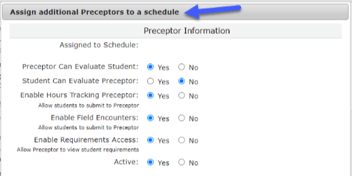A recent study surfaced some alarming numbers when it comes to online learning.
First off, according to the annual CHLOE report, a sizable 66% of universities are planning to add online programs.
This is a promising development in terms of democratizing higher education for students who are geographically limited in their options. As college tuition rises and as society increasingly questions the value of a college education in the nascent Gen Z economy, this can serve as a way to help colleges sustain revenue.
But, this development comes with its own set of challenges. For instance, despite the high number of colleges adding online programs and adapting their in-person programs for online, only 22% of respondents actually have faculty with experience building online coursework. Fewer have orientation for these online learners.
And what about students who wish to pursue Social Work or Nursing? Where do they have a clinical placement in order to get the hands-on experience needed to graduate?
The ever-increasing demand of online student experiences is a forcing function for colleges to build a robust online program in order to compete for tuition revenues in the future.
So if you are looking to bring an online nursing program into the fold, how are you supposed to manage clinical rotations?
And if there are fewer in-person options for your online student, can you create a virtual rotation?
Answering these questions will be key to determining the veracity of such programs for online offerings in the very near future.
Readying clinical placement and rotation for online
The reason most students look for online education is to gain flexibility. Many have full time jobs. Some have children. Others are charting a new career path.
Regardless, the ability for them to asynchronously control their learning makes pursuing higher education possible in the first place.
For decades colleges needed to have a local network of clinics and hospitals to work with in order to place their nursing students and this change is creating a new set of challenges for them as their student body is increasingly spread across the country.
One current challenge that many colleges and students are going to face by moving online is putting the onus of clinical placement and rotation on the student.
Before, many students would simply need to visit their advisor and they could use their local network to get them placement in a clinical rotation. Now, students need to network, be proactive and reach out to multiple organizations in order to find a good location. Preceptors have a role to play here as well.
Once a student finds an appropriate location for a clinical rotation, the college has to vet the location, ensure the student will benefit from a rotation there, and help them get placement. Then comes the task of completing compliance requirements and affiliation agreements.
Even after getting a rotation, clinical hours also can become problematic for the student. This is especially true without the physical academic setting nearby to help advocate for the student when their schedule makes getting rotation time difficult.
This presents a very unique challenge for the online nursing program. First, they have to build more networks and relationships across the country in order to give their student body the ability to get a rotation close to where they live.
Second, they have to effectively be able to communicate asynchronously with both the student and the clinic to ensure the student is getting clinical hours and that the student is getting a viable hands-on learning experience from the clinical rotation.
Are virtual clinical rotations possible?
This graph from the Centers for American Progress shows the aging of the nursing workforce and the lack of young nurses behind them ready to make up for the aging workforce.
CAP’s research was clear in this regard: The nursing shortage won’t be solved with the help of higher education, and there is overwhelming evidence that capacity to train more nurses within higher education is far lower than is actually needed to address the current aging nursing workforce.
Some 60,000 potential nurses were turned away in 2020- 2021 because of the lack of programs available.
One innovation that happened as a result of the COVID19 pandemic was the launch of virtual clinical placements for aspiring students. In England, for example, students were forced to do clinical placements virtually so long as the pandemic made it unsafe for them to do clinical rotations in person.
For instance, students were able to work specialized cases and scenarios that local clinics and hospital settings could not provide due to the nature of the patient cases. Students were also able to practice deep-thinking and critical thinking that they could further analyze with a specialty clinician.
These remote clinical rotations also used video platforms to provide a virtual option for participating in patient interactions. These types of use cases included prenatal exams and checkups for infants and children.
While there is no existential need for virtual rotations at this time, the state of nursing may need to rely on such innovative thinking in the near future with the increasing nursing shortage and no promise that another pandemic isn’t around the corner. Colleges and healthcare providers would be wise to not forget and forego the innovations and learning from the COVID pandemic and how they may be able to help accelerate the training of future nursing professionals.
How to prepare for clinical rotations in online programs
With the state of nursing in need of an influx of professionals and the push to online nursing programs to help ease access to such programs, how can colleges prepare for clinical rotation in an online setting?
Partnering with healthcare facilities
Online programs have to work to establish partnerships with healthcare facilities, hospitals, clinics, or other relevant institutions where students can complete their clinical rotations. These programs can lean into the benefits of alumni networking to help open doors and build new partnerships for clinical opportunities for their distance learners.
This has to be a national effort if offering an online option. Students can enroll in your program from across the country, and it’s vital that preceptors and advisors are building relationships with hospitals, clinics, and nursing homes across the country to help facilitate clinical rotations for students.
These partnerships are essential to ensure that students have access to the necessary clinical settings.
Clinical placement coordination
Many online programs have dedicated staff or coordinators responsible for arranging clinical placements for students.
These coordinators work closely with healthcare partners to secure suitable clinical sites for students. Again, it’s vital these coordinators have a regional and national mindset when it comes to dividing efforts across the in-person and virtual student enrollment body.
For colleges, it may be wise to dedicate a portion to the coordination staff to work exclusively with the virtual student body so they can focus solely on the regional and national relations in order to help virtual students. They will be at a disadvantage in their efforts to get clinical rotation in comparison to their in-person peers.
Utilizing technology is also crucial in efficiently coordinating clinical placements for distance learners. Software such as ELMS by CORE can automate the matching of students, sites, and preceptors based on a number of customizable rules and preferences of your choosing.
Compliance with regulations
Healthcare programs have to adhere to state and federal regulations, as well as accreditation standards, when arranging clinical rotations.
This includes ensuring that clinical sites meet specific requirements for safety, quality, and educational objectives. When coordinating with healthcare partners and readying for helping online students get clinical rotations in different states, be especially mindful that your school is following the appropriate state regulations and your students are aware of any particular statutes.
Orientation and training
Before students begin their clinical rotations, they often participate in an orientation and training by the university and/or clinical site. This orientation covers topics such as patient privacy (HIPAA), safety protocols, and expectations during the rotation.
It’s likely that your university will have an all-encompassing orientation and training to help them prepare for a clinical rotation. But it’s likely they will also have to watch one specialized for the clinical site, as well.
It would be wise to library as many of the clinical site trainings as possible to give students quicker access to these trainings before starting a clinical rotation.
Also, should your university delve into the possibility of virtual clinical rotations, a specialized orientation to what that might look like is advisable as well.
Clinical rotations schedule
The university creates a structured schedule for students' clinical rotations, outlining the duration and specific dates for each rotation.
This schedule is often coordinated well in advance to ensure that students can plan accordingly.
Encourage students to communicate openly with their rotation site and keep their advisors in the loop regarding their schedule. The hands-on experience, be that virtual or in an in-person setting, is a critical time to train the nursing student to ready them for a full-time, in-person environment.
Make sure they are scheduled and get adequate time with patients, with records, and with clinicians who can bolster their experience.
Evaluation and assessment
Throughout the clinical rotation, students are evaluated based on their performance, knowledge, and skills.
Both the university faculty and clinical preceptors may be involved in assessing students' progress.
With an online program, having the right tools in place to ensure students see how they are evaluated, preceptors can access these and give the student feedback. This allows all stakeholders to be ccountable for the student successfully completing their rotation work and program.
Documentation, compliance, and support
Online programs maintain open lines of communication with both students and clinical partners to address any issues, concerns, or questions that may arise during the rotation. This ensures a smooth and successful clinical experience.
Proper documentation of clinical hours, patient encounters, and learning objectives is essential for tracking students' progress and meeting accreditation requirements.
Online learning programs are sure to present nursing colleges with a slew of challenges to make a reliable and repeatable experience for the virtual student.
The key is to understand the success of these programs are predicated through open lines of communication, strong professional networks, and creative solutions to make sure students get a rewarding experience that prepares them for the rigor of the nursing profession.
We owe it to the future of the nursing profession to make clinical rotations successful in online environments. This will undoubtedly be a staple of nursing education going forward. With proper planning, networking, and technology implementation, online programs for nursing will help to shore up the nursing shortage and bring the net wave of nursing professionals successfully into the fold.
Learn how CORE helps health science programs, in-person and online, by providing cutting-edge solutions to streamline tasks, centralize documentation, enhance student and preceptor experiences. and so much more. Request a demo here.
CORE Higher Education Group
Author



.png?width=352&name=Untitled%20(LinkedIn%20Post).png)
